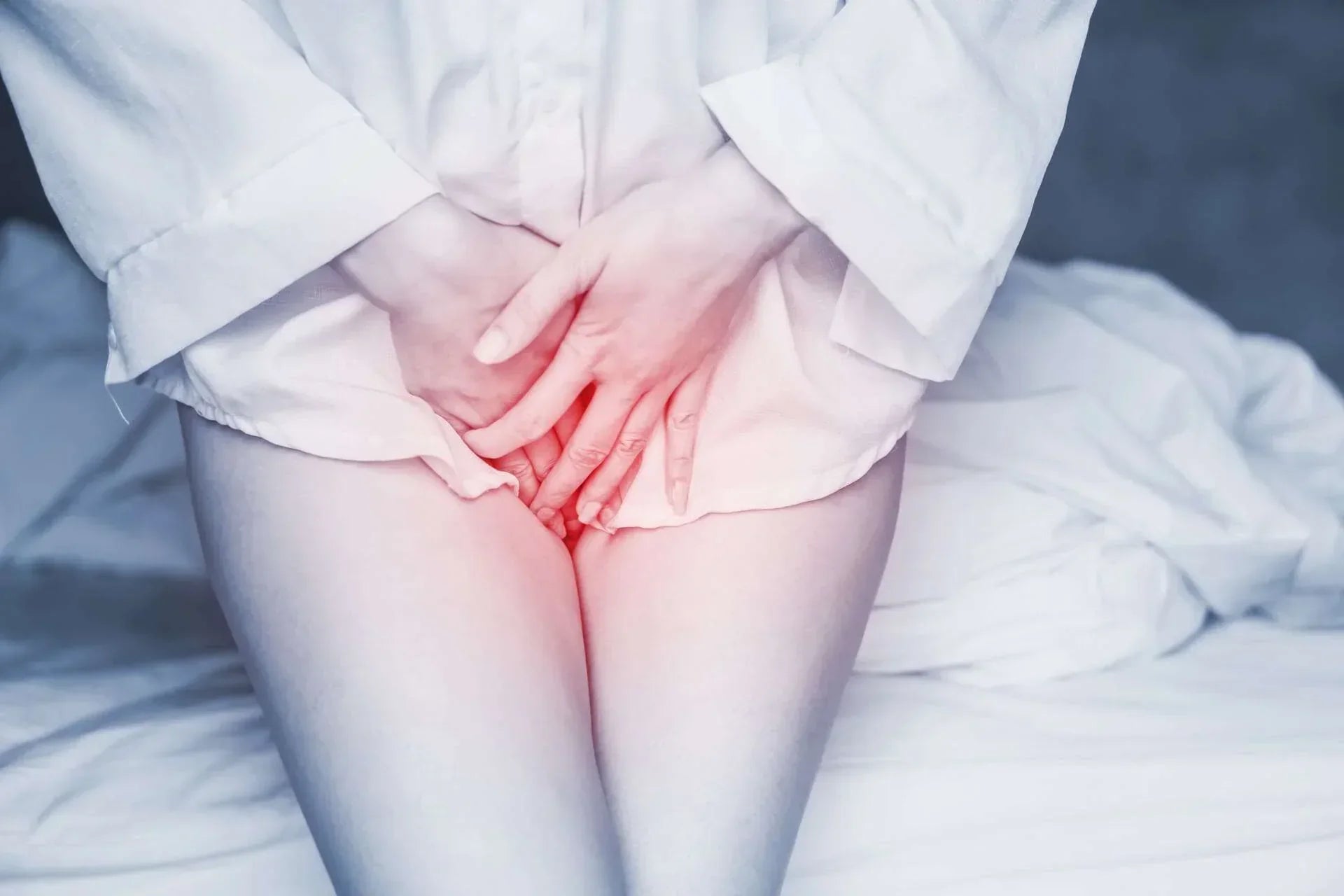Vaginal infections are conditions that affect the external part of the female reproductive system. They are caused by bacteria, parasites, fungi, or viruses (Bupa, 2022). For women, vaginal infections are among the most frequent reasons to visit their doctor. During menopause, oestrogen levels decrease, causing vaginal atrophy. As a result, vaginal tissue becomes slimmer, drier, and more fragile, making it more likely for wounds and cracks to appear in the area, facilitating bacterial infections to occur. Moreover, vaginal acidity decreases during menopause, increasing the risk of infection (Goje, 2021). Learn about the most common vaginal infections during menopause here:

The most frequent vaginal infections during menopause
Vaginal candidiasis
This is a yeast infection caused by Candida albicans. Commonly, this fungus can be found in very small amounts in the vagina, mouth, digestive tract, and skin. Most of the time, it doesn’t cause an infection or present symptoms. It usually remains in stable numbers, but it increases in case of infection. The most frequent symptoms may include:
- Abnormal vaginal discharge, which may appear as a slightly watery white secretion or as a thick, chunky white discharge.
- Burning and itching in the labia and the vagina.
- Vaginismus (pain during intercourse).
- Swelling and reddening of the skin in the vulva.
- Pain, discomfort or burning during urination.
To diagnose vaginal candidiasis, your doctor will perform a pelvic exam to check for swelling and reddening, as well as white, dry spots on the vaginal wall. Then, a vaginal discharge sample is taken for microscopic examination. Treatment for this infection is usually in cream, ointment, vaginal tablets and/or oral tablets forms (Medline Plus, 2022).
Bacterial Vaginosis
Bacterial vaginosis is another example of vaginal infections. It is common during menopause. It is a type of swelling caused by the excess growth of bacteria naturally found in the vagina. Potential causes include having multiple sexual partners or a recent new partner, douching and a lack of lactobacillus. Many vaginosis cases are asymptomatic. The most frequent symptoms may include:
- Thin, grey, white, or green vaginal discharge.
- Foul-smelling "fishy" vaginal odour.
- Vaginal itching.
- Burning during urination.
To diagnose, a doctor may ask questions about the patient’s clinical history, perform a pelvic exam, take a sample of vaginal secretions, and test the patient’s vaginal pH. Treatment involves creams, pills, and antibiotics. It is important to follow the treatment as long as prescribed to avoid recurrence (Mayo Clinic, 2019).
Trichomoniasis
Trichomoniasis belongs to the category of sexually transmitted vaginal infections and is caused by a sexually transmitted parasite which has an estimated incubation period of 4 to 28 days. Signs and symptoms of trichomoniasis may include:
- Foul-smelling vaginal discharges, that may be white, grey, yellow, or green.
- Reddening, burning, and itching in the vagina.
- Pain during urination or sexual intercourse.
To diagnose, doctors will perform microscopic observations of a vaginal discharge sample. However, if the parasite cannot be detected, rapid antigen tests and nucleic acid amplification may be used. Treatment consists of one megadose of either metronidazole or tinidazole. Sexual intercourse must be avoided until full recovery and the patient must avoid drinking alcohol for 72 hours after taking the medication (Mayo Clinic, 2021).
Non-infectious vaginitis
This type of vaginitis is caused by irritants, i.e., substances or elements which may cause an allergic reaction when in contact with the vagina. Irritants may include sperm fluid, latex condoms, lubricants, hygiene products, sanitary pads, and close-fitting lingerie. Symptoms of non-infectious vaginitis may include:
- Swelling and irritation of the vagina and vulva.
- Reddening of the vagina and vulva.
- Pelvic pain, burning and stinging on the vulva.
Since non-infectious vaginitis may have multiple causes, to find out what caused the reaction, a doctor might order a patch test, where different substances are applied on the skin to find out the allergen. These infections are treated by avoiding contact with the irritant (Riggins, 2020). The best way to prevent vaginal infections during menopause is by keeping the area dry and avoiding wet or close-fitting clothes. Washing with scented products, using scented hygiene products and douching are also to be avoided.
References
- Bupa. (2022). Common vaginal infections. Retrieved from: https://www.bupa.co.uk/health-information/womens-health/vaginal-infections
- Goje, O. (Overview of vaginal infections. Manual MSD. Retrieved from: https://www.msdmanuals.com/es-co/hogar/salud-femenina/infecciones-vaginales-y-enfermedad-inflamatoria-p%C3%A9lvica/introducci%C3%B3n-a-las-infecciones-vaginales
- Mayo Clinic. (2019). Bacterial vaginosis. Mayo Clinic. Retrieved from: https://www.mayoclinic.org/es-es/diseases-conditions/bacterial-vaginosis/symptoms-causes/syc-20352279
- MedlinePlus. (2022). Vaginal yeast infection. MedlinePlus. National Library of Medicine. Retrieved from: https://medlineplus.gov/spanish/ency/article/001511.htm
- Riggins, V. (2020). What to know about vaginal infections? Medical News Today. Retrieved from: https://www.medicalnewstoday.com/articles/vaginal-infections#noninfectious-vaginitis
You May Also Like

JOIN US AND GET 10% OFF
Sign up to our newsletter to access free resources, advice and support.















